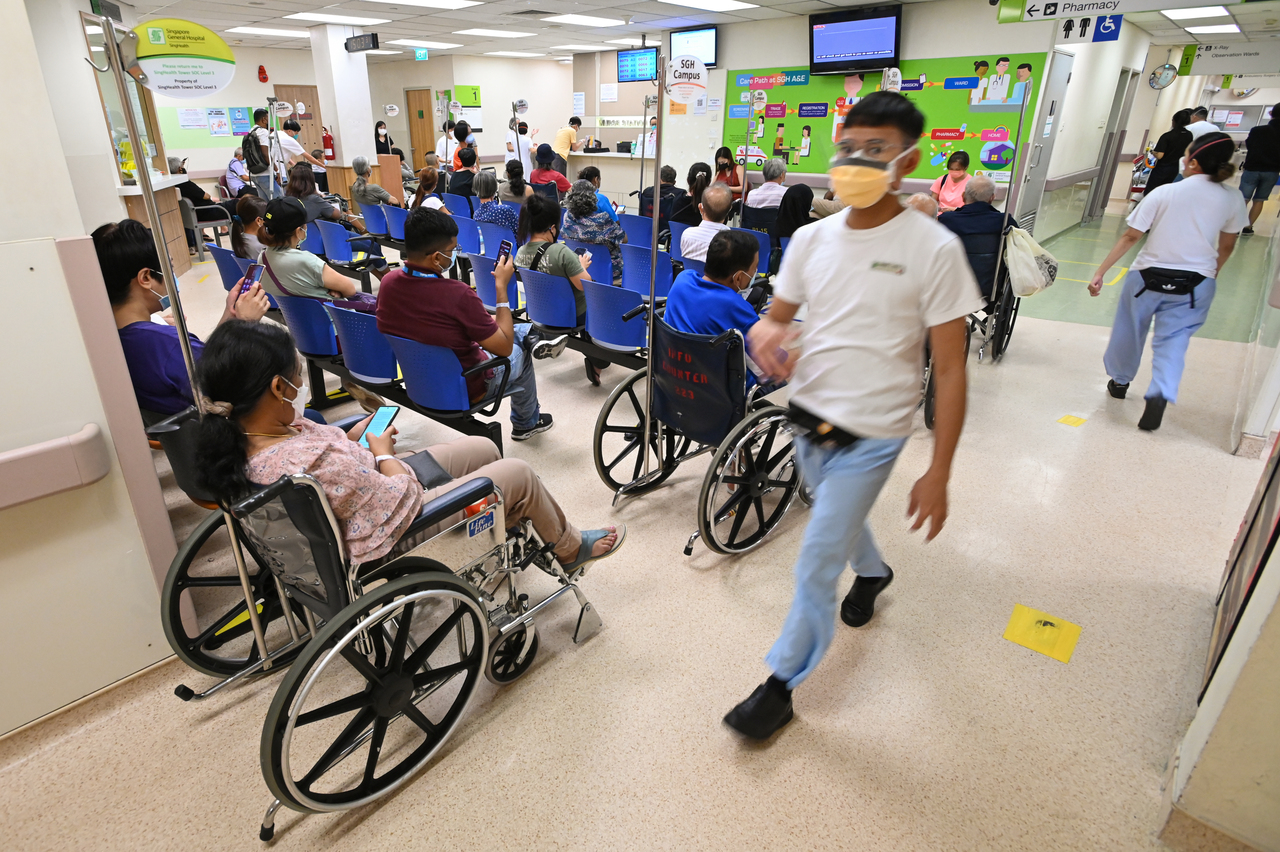Healthcare system still stretched even as S'pore's daily Covid-19 case count dips
Sign up now: Get ST's newsletters delivered to your inbox

The number of people visiting the emergency department has come down slightly, but it is still a very high number, said Health Minister Ong Ye Kung.
ST PHOTO: LIM YAOHUI
Follow topic:
SINGAPORE - Public hospitals, polyclinics and general practitioners are still very busy, and healthcare workers continue to be under significant stress even as Singapore's daily Covid-19 case count dips.
Fortunately, the intensive care unit utilisation rate is well within capacity, and so too are infected patients who need oxygen supplementation.
However, normal wards, especially the emergency departments, are overloaded, Health Minister Ong Ye Kung said on Friday (March 11) at a virtual multi-ministry task force press conference.
The number of people visiting the emergency department has come down slightly in tandem with the drop in cases over the past couple of weeks, from about 3,000 cases a day in public hospitals to 2,800 cases a day, Mr Ong said.
"But it is still a very high number," he added.
To ease the load, some patients are being transferred out of public hospitals to other care settings such as private hospitals.
The Ministry of Health (MOH) has been monitoring the seven-day moving average of local Covid-19 cases.
On Feb 26, the number peaked at about 18,300 cases and since then, this has come down steadily and is about 16,300, Mr Ong said.
To support the hospitals, MOH has stepped up various efforts.
It is beefing up manpower for public health institutions.
Mr Ong said the Singapore Armed Forces has provided tremendous help in supplying MOH with skilled medics and supervisors. MOH has also received help from about 300 nursing students who are studying for their advanced diploma.
"We thank them for returning to work... and contributing to the public hospitals," the minister said.
The number of transfers from public hospitals to Covid-19 treatment facilities (CTFs) has also been increased.
“We used to have many CTF beds, more than 4,000 of them, but they were not well utilised. Only 10 to 20 per cent were occupied,” Mr Ong said.
MOH worked with the CTFs, which are operated by private healthcare providers, to repurpose the facilities, consolidate their manpower so that the nurse-to-patient ratio can be improved. This allows the CTFs to be able to handle higher-risk patients.
“So now the CTFs are about 50 to 60 per cent occupied,” Mr Ong said.
He added that where possible, hospitals will also provide home care instead of hospital care.
In addition, MOH will partner various stakeholders to reduce emergency department admissions. For instance, the ministry is working with the Singapore Civil Defence Force to take clinically stable patients directly to the CTFs, instead of taking them to public hospitals and then transferring them to the CTFs.
MOH is also starting to divert some non-Covid-19 stable patients who require monitoring and management of their chronic conditions from public hospitals to facilities like private hospitals and the CTFs.
Specific facilities are being set up and this will help to free up capacity and reduce the load in public hospitals.
Due to all these efforts, MOH has managed to transfer an average of 470 patients per day out of public hospital wards, Mr Ong said.

